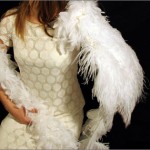Popular Science’s Future of .., a programme [developed in response to a question “What’s missing from science programming?” posed by Debbie Myers, {US} Science Channel general manager] , was launched last night (Aug. 11, 2009). From the Fast Company posting by Lynne D. Johnston,
The overall response from the 50-plus room full of mostly New York digerati, was resoundingly, “a show that was both entertaining and smart–not dumbed down.”
Their host, Baratunde Thurston, offers an interesting combination of skills as he is a comedian, political pundit, and author. If you go to the posting, you can find the trailer. (It’s gorgeous and, I suspect, quite expensive due to the effects, and as you’d expect from a teaser, it’s short on science content.)
It does seem as if there’s some sort of campaign to make science ‘cool’ in the US. I say campaign because there was also, a few months ago, the World Science Festival in New York (mentioned in my June 12, 2009 posting). Thanks to Darren Barefoot’s blog I see they have posted some highlights and videos from the festival. Barefoot features one of musician Bobby McFerrin’s presentations here.
Barefoot comments on the oddity of having a musician presenting at a science event. The clip doesn’t clarify why McFerrin would be on the panel but neuroscientists have been expressing a lot of interest in musician’s brains and I noticed that there was at least one neuroscientist on the panel. Still, it would have been nice to have understood the thinking behind the panel composition. If you’re interested in more clips and information about the World Science Festival, go here.
Back to my thoughts on the ‘cool’ science campaign, there have been other initiatives including the ‘Dancing with scientists’ video contest put on by the American Association for the Advancement of Science and the nanotechnology video contests put on by the American Chemical Society. All of these initiatives have taken place this year. By contrast, nothing of a similar nature appears to be taking place in Canada. (If you know of a ‘cool science’ project in Canada, please do contact me as I’d be happy to feature it here.)
On the subject of putting together panels, there’s an interesting blog posting by Allyson Kapin (Fast Company) on the dearth of women on technology and/or social media panels. She points out that the problem has many aspects and requires more than one tactic for viable solutions.
She starts by talking about the lack of diversity and she very quickly shifts her primary focus to women. (I’ve seen this before in other writing and I think it happens because the diversity topic is huge so writers want to acknowledge the breadth but have time and expertise to discuss only a small piece of it.) On another tack altogether, I’ve been in the position of assembling a panel and trying to get a diverse group of people can be incredibly difficult. That said, I think more work needs to be done to make sure that panels are as diverse as possible.
Following on my interest in multimodal discourse and new ways of communicating science, a new set of standards for graphically representing biology has been announced. From Physorg.com,
Researchers at the European Molecular Biology Laboratory’s European Bioinformatics Institute (EMBL-EBI) and their colleagues in 30 labs worldwide have released a new set of standards for graphically representing biological information – the biology equivalent of the circuit diagram in electronics. This visual language should make it easier to exchange complex information, so that models are accurate, efficient and readily understandable. The new standard, called the Systems Biology Graphical Notation (SBGN), is published today (August 11, 2009) in Nature Biotechnology.
There’s more here and the article in Nature Biotechnology is here (keep scrolling).
